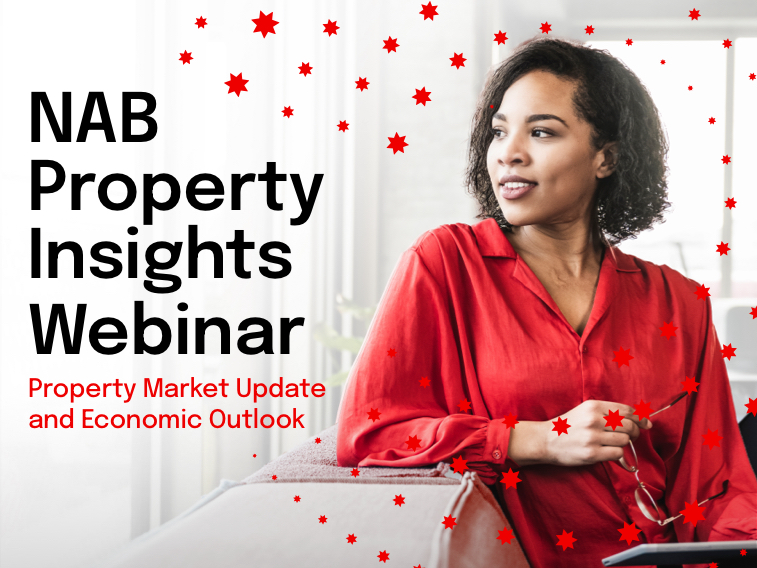Hear NAB’s senior expert panellists discuss a range of topics to provide key insights to help you and your business prepare for the current property market climate.

NAB’s Residential Property Index rises as stronger house price growth offsets falling rents. Sentiment is up in all states except WA which remains deeply negative. Foreign buyers are more active in NSW (1 in 5 new sales) and are now at similar levels to Victoria.

NAB’s Residential Property Index rises as stronger house price growth offsets falling rents. Sentiment is up in all states except WA which remains deeply negative. Foreign buyers are more active in NSW (1 in 5 new sales) and are now at similar levels to Victoria. Around 1 in 4 purchases are being made by first home buyers (FHB), both as “owner occupiers” but also as “investors”.
The NAB Residential Property Index rose to +21 points in Q1’15, up from +12 points in Q4’14 and sits comfortably above its long-term average (+14 points).
NAB Group Chief Economist Alan Oster said: “Overall sentiment remains strongest in NSW, followed by Victoria and Queensland. Sentiment improved in SA/NT but was still negative and unchanged in WA”.
Queensland and Victoria are now the most optimistic in next 1-2 years, with WA the most pessimistic (but much less so than in Q4).
While expectations for national house prices strengthened over the next 1-2 years, the picture remains quite mixed across states.
“Nationally, prices are tipped to grow 2.1% in the next 12 months, with expectations up in NSW (3.3%) and Queensland (3.3%). The outlook for Victoria (1.3%) and SA/NT (-0.4%) was scaled back however while prices were expected to remain flat in WA”, said Mr Oster.
Foreign buyers were more active in new housing markets, accounting for 15.6% of demand.
“There was however a notable shift in activity by location with the share of foreign buyers in NSW rising to a new high of 21% and falling to 20.7% in Victoria (from 33% in Q4 2014)” said Mr Oster.
In contrast, foreign buyers were less active in established housing markets, with their share of national demand inching down to 7.5% (8.7% in Q4’14).
Foreign buyer demand fell notably in Victoria (8.6%) and to a lesser extent in Queensland (5.1%), but increased slightly in WA (6.1%) and was broadly unchanged in NSW (11.2%).
Nationally, 53% of all foreign purchases were for apartments, 30% houses and 17% for re-development. The bulk of foreign buyers (41%) spent between $500k to <$1 million, with 30% buying properties less than $500k and 5% buying premium property in excess of $5 million.
According to Mr Oster: “First homebuyers (FHBs) still account for around 1 in 4 of all new property sales, but the share of demand from FHBs owner occupiers fell to 14.7% while FHBs investors rose to 10.1%. Owner occupiers were broadly unchanged at 33.1%, while local investors were down slightly to 24.1%.”
NAB Economics is forecasting average national house price growth of 4.4% through the year to end-2015. Capital growth is expected to be led by Sydney (7.7%), followed by Melbourne (6.2%), Brisbane (3.8%), Perth (0.7%) and Adelaide (0.4%).
“Average national house price growth is expected to moderate in 2016 to 3.4%, largely reflecting our forecasts for rising unemployment, sluggish household income growth, affordability concerns (especially in Sydney and Melbourne), cost of living pressures and still high levels of household debt” said Mr Oster.
“However, we expect price growth to accelerate in Brisbane (5.7%) and in the under-performing markets of Adelaide (5.2%) and Perth (2.5%), while slowing in Melbourne (3.5%) and Sydney (3.4%)”.
Individual state reports for NSW, Victoria, Queensland, WA and SA/NT providing a more comprehensive review of the survey results for each market are available on request.
For further analysis download the full report.
For State specific analysis please download below:
© National Australia Bank Limited. ABN 12 004 044 937 AFSL and Australian Credit Licence 230686.